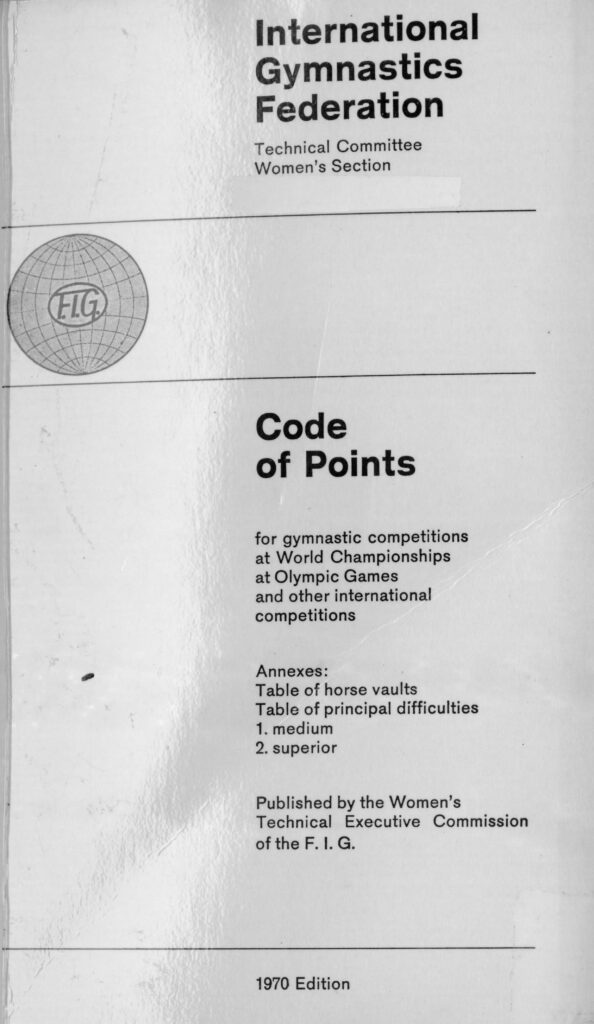In 1970, the Women’s Technical Committee published a new version of the Code of Points. Many of the rules had already been in place in the 1968 Code of Points (e.g. only four judges per apparatus instead of the previous norm of five judges per apparatus).
The major change in the English version was the inclusion of stick figure drawings. Let’s take a look at the Code.

A Few Basics
The following scoring structures were present in the 1968 Code of Points, as well. But to refresh your memory, here they are again:
Breaking down the 10.0 (Compulsories)
- 4 points
- 2 points: Exactness and correctness of all parts of the exercise
- 0.50 points: Exactness and precision of direction and the floor pattern
- 1.50 points: Exactness of the rhythm of the exercise
- 6 points
- 1 point: Elegance of the gymnast
- 1.50 points: Sureness of the execution
- 1.50 points: Amplitude of the movements
- 1.00 point: Coordination of the movements
- 1.00 point: Lightness of the jumps and the acrobatics
Breaking down the 10.0 (Optionals)
- Routine composition: 6 points
- 4 points: value of the difficult elements
- 1.5 points: originality and value of the combinations (connections)
- 0.5 points: value of the general composition of the exercise (structure)
- Execution of the exercise: 4 points
- 1.50 points: execution
- 1.50 points: amplitude
- 1.00 points: general impression
Exercises had to include:
- 4 elements of medium difficulty (0.50 each element)
- 2 elements of superior difficulty (1.0 each element)
A Few Observations about Beam
- A sheep jump was called a “cheerleader jump.”
- There was a butterfly jump in the Code. It was a superior difficulty move.
- My thought bubble: Someone needs to bring this back, or do a full-twisting butterfly on beam.
- A forward roll without your hands was of the same difficulty as an aerial cartwheel.
- Nowadays, a forward roll without hand support is a B, while an aerial cartwheel is a D.
Note: If you’re curious about what a butterfly looks like on beam, Kerstin Gerschau (GDR) performed the skill at the 1976 Olympics.
One reply on “1970: The Women’s Code of Points”
I have been collecting multiple codes of points for my dissertation work for a bit. If you are interested in a collaboration at some point, please let me know. I am currently working on my dissertation project involving the use of music within Olympic sport (including WAG and Rhythmic Gymnastics). I would be happy to share the codes of points that I have been able to collect.